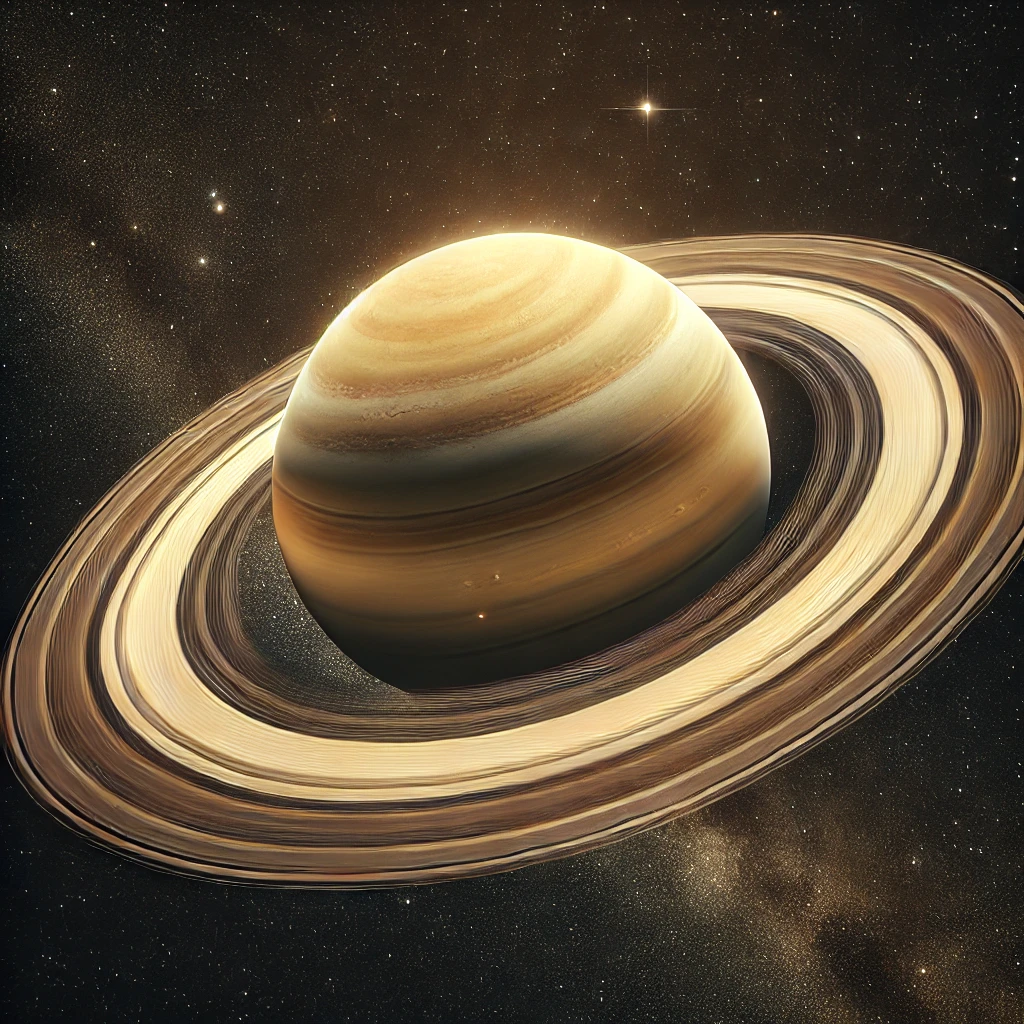Greetings, space adventurers! Captain Nova here, transmitting from the Odyssey Explorer on Day 10 of our “100 Days of Space Exploration.” Today, we’re visiting one of the most iconic and mesmerizing planets in the Solar System: Saturn. Known for its breathtaking rings and mysterious atmosphere, Saturn has captivated humanity for centuries. Let’s dive into the wonders of this gas giant and uncover its secrets.

Saturn: Quick Facts
Saturn is the sixth planet from the Sun and the second-largest in the Solar System, surpassed only by Jupiter. Here are some essential facts about this stunning world:
- Diameter: About 120,536 kilometers (74,900 miles), roughly nine times the size of Earth.
- Distance from the Sun: Approximately 1.4 billion kilometers (886 million miles).
- Day Length: 10.7 hours, making it one of the fastest-spinning planets.
- Year Length: 29.5 Earth years.
- Surface Temperature: A frigid -178°C (-288°F).
- Moons: Over 80 known moons, including the fascinating Titan and Enceladus.
Saturn’s low density is remarkable; it’s the only planet in the Solar System that would float in water—if you could find a tub big enough!
The Rings: Saturn’s Crowning Glory
What sets Saturn apart is its dazzling system of rings. First observed by Galileo in 1610, these rings have since become one of the most studied features in planetary science. Here’s what makes them so extraordinary:
- Composition: The rings are primarily made of ice particles, with some rock and dust mixed in.
- Size and Structure: Saturn’s rings extend up to 282,000 kilometers (175,000 miles) from the planet but are astonishingly thin—often less than a kilometer thick.
- Divisions: The rings are divided into seven main sections, labeled A through G. The Cassini Division, a prominent gap between the A and B rings, is particularly striking.
How Did the Rings Form?
The origin of Saturn’s rings remains a topic of scientific debate. Some theories suggest they formed from the remnants of a shattered moon or comet that ventured too close to Saturn and was torn apart by its powerful gravity. Others propose that the rings are remnants from the early Solar System, offering a glimpse into its formative years.
Saturn’s Mysterious Moons
Saturn is home to a fascinating collection of moons, each with its own unique characteristics. Let’s explore two of the most intriguing ones:
- Titan: Saturn’s largest moon, Titan, is the second-largest moon in the Solar System (after Jupiter’s Ganymede). It’s the only moon with a dense atmosphere, composed mainly of nitrogen and methane. Titan’s surface features lakes, rivers, and seas of liquid methane and ethane, making it a prime candidate for studying prebiotic chemistry and the potential for life.
- Enceladus: This small, icy moon has captured scientists’ attention due to its subsurface ocean and geysers that spew water vapor and organic compounds into space. These discoveries, made by NASA’s Cassini mission, suggest that Enceladus could harbor conditions suitable for microbial life.
The Cassini-Huygens Mission
Our understanding of Saturn and its moons took a giant leap forward thanks to the Cassini-Huygens mission. Launched in 1997, the spacecraft spent 13 years orbiting Saturn, delivering a treasure trove of data and stunning images. Some of its key achievements include:
- Mapping Saturn’s intricate ring system in unprecedented detail.
- Revealing Titan’s surface and its hydrocarbon lakes.
- Discovering water-ice plumes erupting from Enceladus.
- Studying Saturn’s dynamic atmosphere and powerful storms.
The mission ended in 2017 with a dramatic “Grand Finale,” where Cassini plunged into Saturn’s atmosphere, ensuring it wouldn’t contaminate any of the planet’s potentially habitable moons.
Saturn’s Atmosphere: A Stormy Giant
Like Jupiter, Saturn is a gas giant composed mainly of hydrogen and helium. Its upper atmosphere features stunning bands of clouds, driven by high-speed winds reaching up to 1,800 kilometers per hour (1,118 miles per hour). One of Saturn’s most intriguing atmospheric phenomena is the hexagon-shaped storm at its north pole, a mysterious feature that continues to puzzle scientists.
The Importance of Studying Saturn
Exploring Saturn helps us understand the complex dynamics of gas giants and their role in shaping our Solar System. Studying its rings, atmosphere, and moons provides insights into:
- The processes that govern planetary formation and evolution.
- The potential for life in environments vastly different from Earth.
- The intricate interplay between a planet and its moons.
Saturn in Culture and Mythology
Saturn’s grandeur has inspired humans for millennia. In Roman mythology, Saturn was the god of agriculture and time, symbolizing abundance and cyclical renewal. Its slow, stately movement across the sky earned it the title of the “Old Father Time” planet. Today, Saturn continues to inspire awe and wonder, appearing in countless works of art, literature, and film.
A Destination Worth Revisiting
As I gaze at Saturn from the Odyssey Explorer, I’m reminded of the immense beauty and complexity of our Solar System. Saturn’s rings and moons offer a wealth of mysteries waiting to be unraveled. Future missions, such as NASA’s Dragonfly, which will explore Titan, promise to deepen our understanding of this magnificent planet.
Tomorrow, we’ll journey further into the outer Solar System to explore the ice giant Uranus. Until then, keep dreaming big and embracing the spirit of discovery.
Stay curious,
Captain Nova
Odyssey Explorer
Leave a Reply